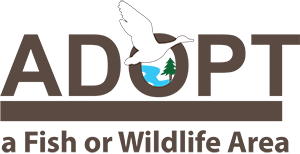Evansville Wildlife Area and Allen Creek Stream Bank Protection Area
Evansville Wildlife Area is located south and east of the city of Evansville in Rock County. It currently contains 707-acres of state owned, 100 acres of easements and 40 acres of leased lands. The DNR also owns 223 acres of stream bank protection land along Allen Creek immediately west of the wildlife area and west of State Highway 213.
A significant amount of leased private lands, over 8,500 acres, is available for public hunting south and east of the Evansville Wildlife Area. These leased lands are part of a six decade effort to provide hunting opportunities in northwest Rock County. For additional details on these lands, refer to the Footville Public Hunting Grounds.
The property contains 704 acres of state-owned marsh immediately south of the city of Evansville, 240 acres of state-owned stream bank protection land, and 4,600 acres of private land leased for public hunting in Union, Porter, Magnolia and Center townships. The state marsh is native wet prairie, canary grass, giant ragweed and sedges surrounded by 160 acres of planted native grass and 230 acres of cropland planted to corn, soybeans, sunflower and hay. There are over 1.5 miles of trout stream and numerous drainage ditches on the area. Maintenance on the wildlife area has been adopted by the Rock River Valley Chapter of Pheasants Forever.
Management Objectives
The Evansville Wildlife Area was established in 1960 and is home to many grassland birds including pheasants, bobwhites, upland sandpipers, harriers and dickcissels. Prescribed burning and farming are the two most common management practices on the area. Pheasants and doves are the two most common species hunted there.
For more information on master planning for this and other wildlife areas around the state, visit the property planning page.
Recreation
-
The Evansville Wildlife Area offers many recreational opportunities:
- Birding;
- Cross-country skiing (no designated trail);
- Fishing;
- Hiking (no designated trail);
- Hunting (especially noted for pheasants);
- Trapping;
- Wild edibles/gathering; and
- Wildlife viewing,
Maps
Download [PDF] a map of this property.
If you are interested in exploring this property further, you can access an interactive map.
Find out more about how to adopt this wildlife area.

